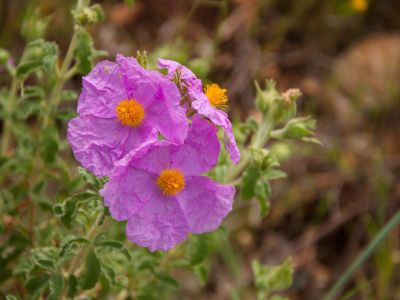What is Rockrose?
Native to the Mediterranean, rockrose plants have soft green foliage that varies in shape depending on the species. Large, fragrant flowers bloom for about a month in late spring and early summer. Each blossom lasts only a day and may be pink, rose, yellow, or white, depending on the species. Use rockrose shrubs in dry areas as a xeriscaping plant or in coastal areas where they tolerate sandy soil, salt spray, and strong winds. These 3- to 5-foot (1 to 1.5 m.) shrubs make an attractive, informal hedgerow. Rockrose plants are particularly useful for erosion control on dry banks.
Rockrose Information
There are about 20 species of rockrose that grow in the Mediterranean, but only a few are in cultivation in North America. Here are some great choices:
Purple Rockrose (Cistus x purpureus) grows 4 feet (1 m.) tall with a spread of up to 5 feet (1.5 m.) and a compact, rounded shape. The large flowers are deep rose or purple. The shrub is attractive enough to use as a specimen, and it also looks great in groups. This species is sometimes called orchid rockrose. Sun Rose (Cistus albidus) grows 3 feet (1 m.) tall and wide with a dense, bushy habit. The dark lilac-pink flowers have yellow centers. Older plants may become leggy and it’s best to replace them rather than try to prune them into shape. White Rockrose (Cistus corbariensis) has cheery, white flowers, usually with yellow centers and sometimes with brown spots near the base of the petals. It grows 4 to 5 feet (1 to 1.5 m.) tall and wide.
Rockrose Care
Nothing could be easier than growing rockrose. Plant the shrubs in a location with full sun and deep soil where they can put down spreading roots. They grow in almost any type of soil as long as it drains freely, including poor soils where other shrubs struggle to take hold. Rockrose plants are hardy in USDA plant hardiness zones 8 through 11. Water rockrose plants regularly during their first growing season. Once established, they never need watering or fertilization. They resent heavy pruning, so it’s best to limit routine trimming to the minimum necessary to repair winter damage and correct the shape. As the branches age, they become weak and stop bearing flowers. Remove older branches by cutting them away at the base. Prune soon after the flowers fade to preserve the buds that will form next year’s flowers.
